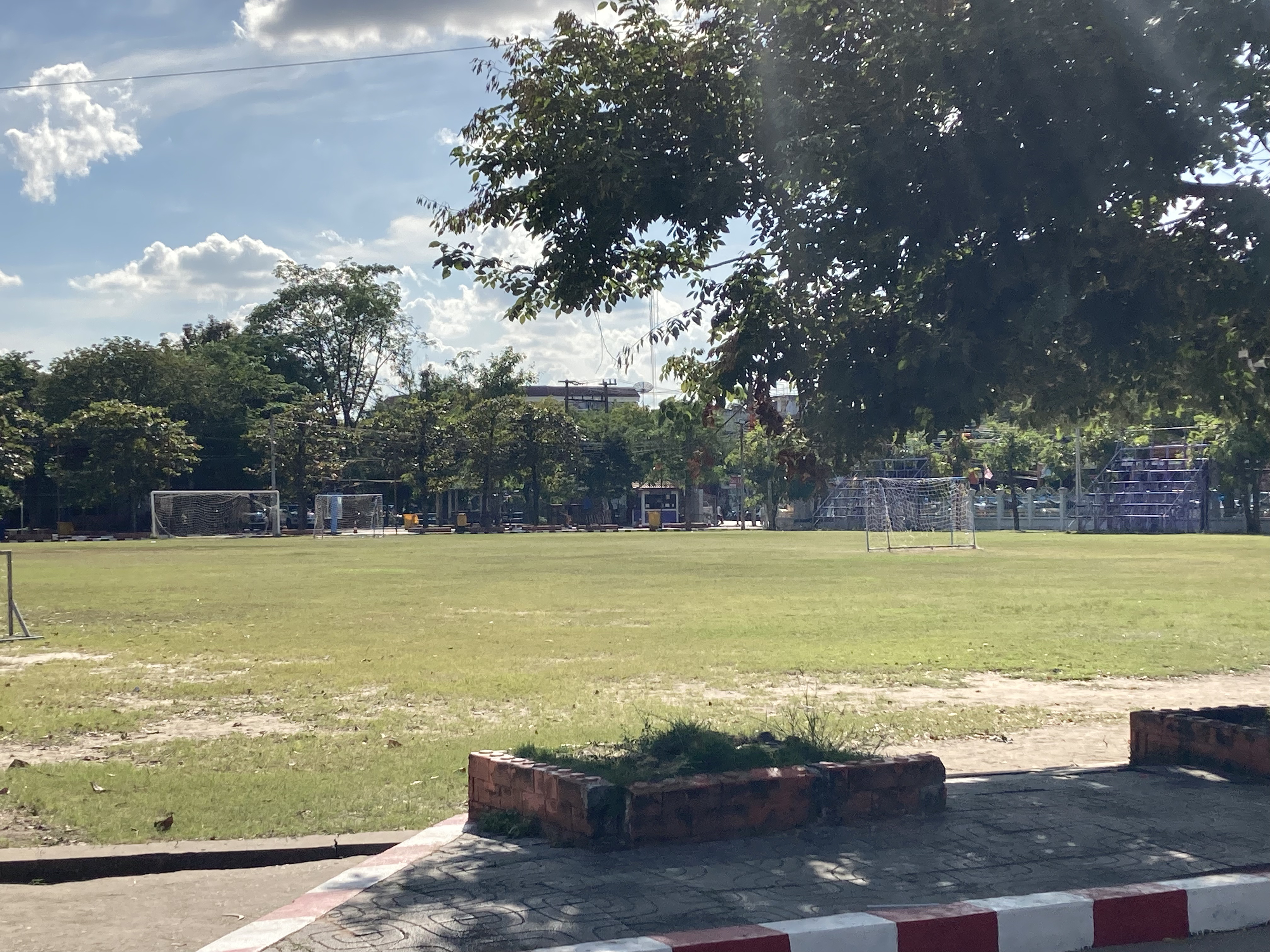Classroom to Classroom: Thailand Schools
A little point of trivia to those of you who didn’t grow up in the Philippines: I grew up in a city called Dasmariñas – a surprisingly small, town-ish area in the province of Cavite. While admittedly, Dasmariñas is a bit too small to be considered as a full-blown city, what it makes up for in towering skyscrapers and downtown avenues is the abundance of schools in the area. Public schools are everywhere, and just about anyone who calls themselves a respectable Dasmarineño had studied in one.
First Impressions: Ban Mhaekeng School
Stepping into Ban Mhaekeng School felt like entering a new world. From its towering buildings, vibrant student uniforms, and densely filled classrooms, it was a homely sight. Nevertheless, a part of me felt unease, daunted by the challenge of finally teaching a classroom of my own.
The first week’s agenda: observation. With Teacher
Aom as my patient mentor and Teacher Jin's kind insights from her student
teaching experience, I embarked on a gentle tour of the school's grounds to get
familiar with my now second home.
From what I could gather, Ban Mhaekeng
is itself a public school which caters to early childhood, primary, and
secondary levels of education. Classrooms between and among grade levels were
split between different buildings; the kindergarteners were located near the
assembly hall; primary schoolers were situated near the front of the
university; and the high school buildings (the one that I was assigned to) were
located near the center of the school, adjacent to the kindergarten building.
At the heart of the school is a massive auditorium, which I reckon is around 200 meters across. There was also a small podium at the helm of the auditorium; standing across the length of the hall made it so that you couldn’t see nor hear who was on stage at the time.
Apart from some administrative
buildings, the school also had convenience stores on campus – one near the
auditorium, and the other situated at the school canteen. Much to my
disappointment, they don’t sell coffee on school grounds, which is a missed
opportunity in my humble, caffeinated opinion.
One of the things that had also
surprised me about the school was the sheer amount of space it has for
recreational activities. Apart from the massive auditorium, the school also
boasts a football field, a basketball court, and workbenches for students to
enjoy.
Academic Support
To tell you the truth, Ban Mhaekeng’s
academic support system wasn’t anything special in terms of teaching foreign
languages, at least from the ones that I was used to back home. Teachers in the
school were quite big on one-on-one tutoring, and they’d sometimes bring their
students to the teacher’s office just so they’d have someplace to study.
To my knowledge, the school also offered extracurricular activities, competitions, and the like, something also seen in most schools. Last time I was there, a few students of mine were preparing for a speech competition; they had Teacher Jin and Teacher Aom as their coaches so I think they did quite well.
Did I also mention sports? Because the
football field and basketball courts weren’t just there for show. They were
legitimately used by the students to practice for competitions and school
events.
Oh yeah, the school also has a marching
band, which I thought was kind of cool.
Inside the Classroom: Teachers
I had come to Thailand to teach English,
so naturally, I was assigned under the foreign languages department and was to
teach the subject to 8th graders exclusively.
The first time I had seen what these
classrooms were like, I was surprised at how much of the mother language was
used in the instruction. You know, when you’re in a foreign languages class,
you would think that the language you’d use would also be foreign but not in
Thai classrooms apparently. They use Thai for general instruction and English
for not much else, apart from reading, of course.
The classroom dynamic was quite
teacher-centered; around 90 percent of the time, teachers would be the ones in
front doing much of the explanation. During my week-long observation, I could
count on both hands the number of times students had participated in the
classroom, which was bizarre, to tell you the truth.
Oh yeah, did I also forget to mention,
class periods were divided into 50-minute sessions! I mean, I’m all for shorter
class hours, but 50 minutes is rarely enough time to cover a module in one
sitting, much less include an activity on top of everything else. Which I
suppose is also the reason why not many students involve themselves in the
discussion, hm.










Comments
Post a Comment